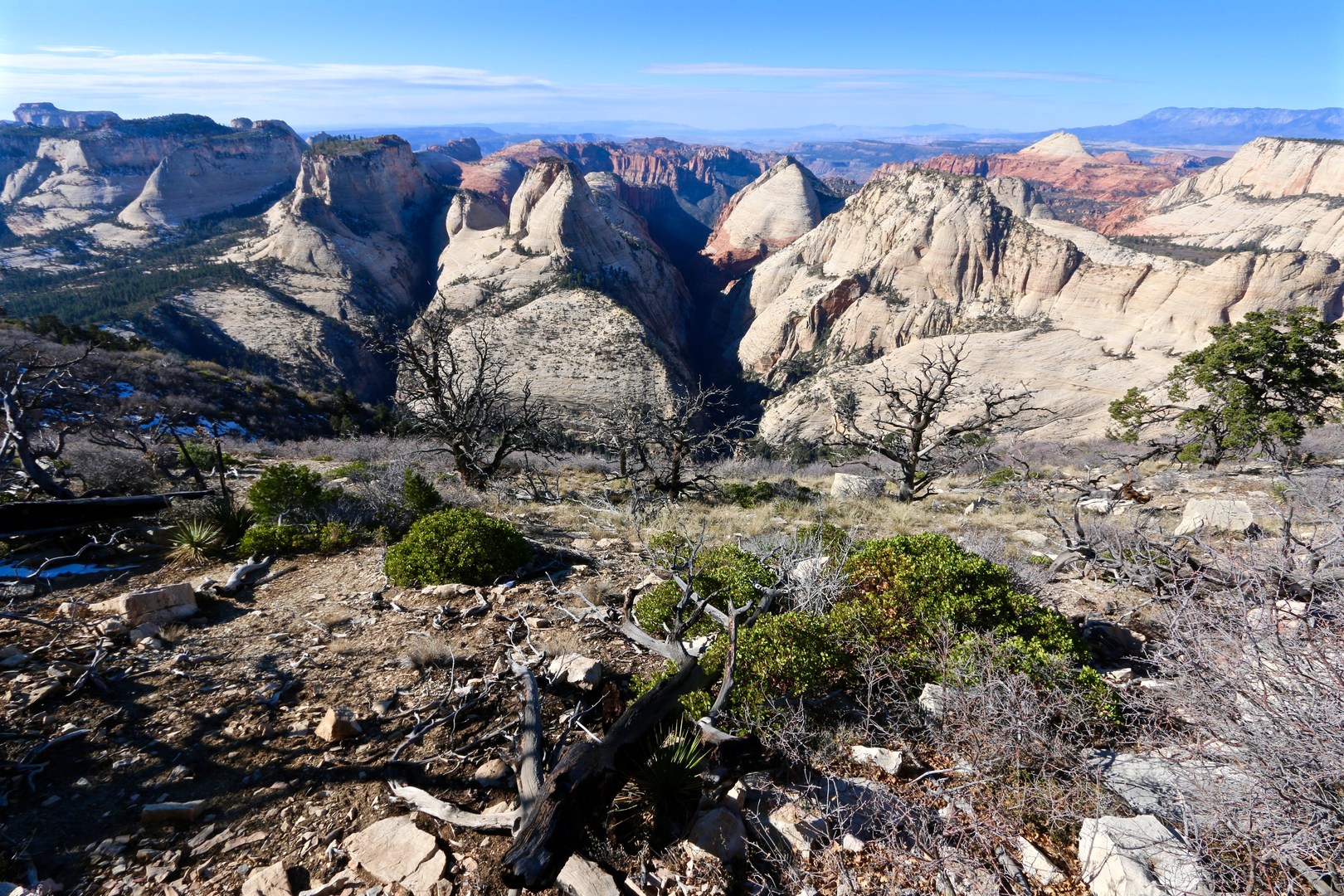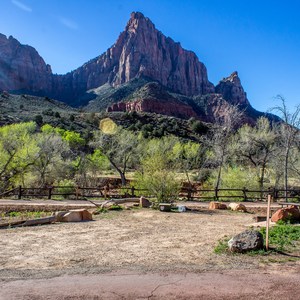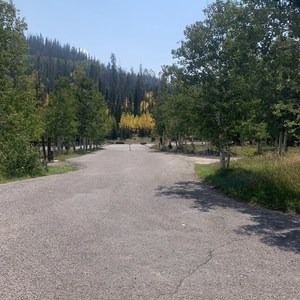The West Rim Trail offers some of the most spectacular scenery in the American Southwest and is considered one of the classic backcountry trails in Zion National Park. Winding for 14.5 miles from the forested plateaus near Lava Point (the highest point in the park) to the floor of the main canyon, the trail can be traversed as a long point-to-point day hike or as a two-day backpack. In either event, most hikers choose to descend from Lava Point to the main canyon, considering the substantial elevation change and the stunning views awaiting hikers as the trail approaches and eventually drops into Zion Canyon.
The first section of the trail is relatively flat and winds through pine forest along the upper plateau. Elk and mule deer are commonly spotted along this stretch. After approximately 3 miles, hikers are afforded their first dramatic views to the southwest of the Left Fork of North Creek and the impressive South Guardian Angel. The trail gradually descends for the next 2 miles into Potato Hollow, which is followed by a short ascent to the Hammerhead Viewpoint, offering unbelievable and unobstructed views to the west of the Great West Canyon. The trail then continues for several miles of jaw-dropping vistas along the western rim, including views to the south of the towering pillars of Heaps Canyon, and it eventually descends off of the plateau to Cabin Spring.
From Cabin Spring the trail begins a steady descent of switchbacks along a sheer wall of sandstone and eventually heads east toward Zion Canyon. Amazing views of the main canyon materialize in the distance, with the Great White Throne, Red Arch Mountain and Angels Landing dominating the horizon. The trail skirts the precipice of the west side of the main canyon and eventually reaches Scout Lookout, where a short spur trail leads along the knife-edge of Angels Landing. The spur trail is spectacular but extremely crowded, and it may take an additional hour or more. From Scout Lookout the trail quickly descends through the iconic switchbacks of "Walter's Wiggles," winds through Refrigerator Canyon, and eventually breaks out into a glorious view of Zion Canyon, meandering downward for another mile to the canyon floor and the Grotto Trailhead.
Autumn makes a great time to visit Zion National Park due to the reduced crowds and more pleasant temperatures. The best time to visit Zion for fall colors is late October through mid-November. There is a dazzling array of trees to see including scrub oak, maple, quaking aspen, cottonwood, juniper, and piñion. As with all fall colors, the higher elevations tend to turn first, so use the time range as a guide depending on what elevations of the park you plan to visit.































Comments
Sign In and share them.